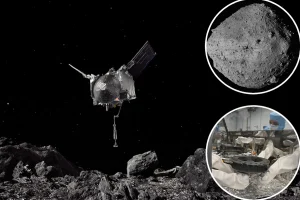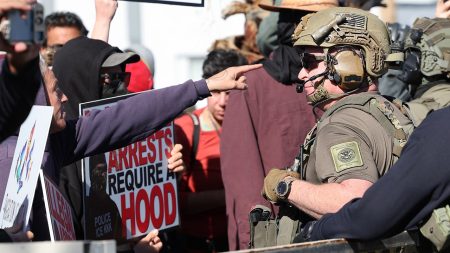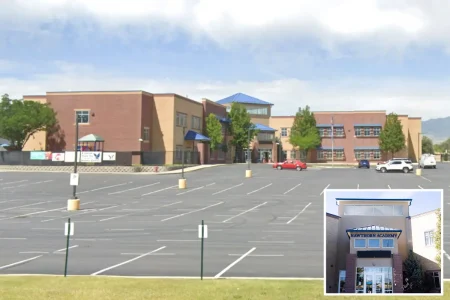Israel’s Gaza Offensive: The Elusive Search for a Decisive Victory Against Hamas
In the dust-covered streets of what was once the vibrant heart of Gaza City, Israeli tanks maneuver through narrow passages while soldiers conduct house-to-house operations in what military officials have described as the most intensive phase of their war against Hamas. More than seven months into the conflict that erupted after Hamas’s October 7 attack, Israeli leaders maintain that their Gaza City offensive could deliver the knockout blow they’ve been seeking against the militant organization. Yet behind this public confidence lies a more complex reality that military analysts, international observers, and even some Israeli officials privately acknowledge: Hamas continues to demonstrate remarkable resilience despite the overwhelming firepower deployed against it.
The Shifting Battlefield: Gaza City Returns to Center Stage
The renewed focus on Gaza City represents a strategic pivot for the Israeli Defense Forces (IDF), which had previously concentrated their operations in other parts of the enclave. “We’re targeting Hamas’s regenerating capabilities in Gaza City, which they’ve been rebuilding since our initial operations,” explained Defense Minister Yoav Gallant during a recent visit to troops positioned on the city’s outskirts. Intelligence assessments suggest that hundreds of Hamas fighters have filtered back into areas previously cleared by Israeli forces, establishing new command centers in the labyrinthine underground network that survived earlier bombardments. This pattern of withdrawal and return has frustrated Israeli military planners, who find themselves fighting for control of neighborhoods they claimed to have secured months earlier. The current operation involves elements from the Golani Brigade, paratroopers, and specialized engineering units tasked with discovering and destroying tunnel infrastructure that Hamas has used effectively for both defensive operations and surprise attacks.
Hamas’s Adaptive Tactics Challenge Israeli Military Superiority
Despite facing an opponent with vastly superior firepower, advanced surveillance capabilities, and air dominance, Hamas continues to demonstrate tactical adaptability that has surprised even veteran IDF commanders. Recent weeks have seen an uptick in ambushes against Israeli patrols, with fighters emerging from concealed positions to launch anti-tank guided missiles before quickly disappearing into tunnels or blending back into civilian areas. “Their fighters operate in small, mobile cells with minimal communication equipment that’s difficult to track,” noted a senior Israeli intelligence officer speaking on condition of anonymity due to operational sensitivities. “They’ve adapted to our aerial surveillance by moving primarily at night and using civilian infrastructure in ways that complicate our targeting decisions.” This guerrilla warfare approach has inflicted a steady stream of casualties on Israeli forces while requiring minimal resources from Hamas, allowing the group to conserve fighters and weapons for sustained resistance. Military historians observing the conflict have drawn parallels to other asymmetric urban conflicts, where conventionally superior forces found themselves mired in protracted struggles against determined insurgents with intimate knowledge of the terrain.
The Humanitarian Crisis Intensifies as Military Operations Expand
As the battle for Gaza City intensifies, the humanitarian situation continues to deteriorate for hundreds of thousands of civilians caught in the crossfire. The United Nations Office for the Coordination of Humanitarian Affairs reports that access to clean water, medical supplies, and food has reached critically low levels in northern Gaza, with several hospitals no longer functional due to damage or lack of essential resources. “We’re facing a catastrophe that worsens by the day,” said Dr. Mahmoud Shalabi, who coordinates emergency medical services in what remains of Al-Shifa Hospital. “Patients are dying not just from wounds but from preventable secondary infections because we lack basic antibiotics and proper sterilization equipment.” The renewed military operations have further complicated aid delivery, with several humanitarian corridors closed during active combat operations. International relief organizations have increasingly voiced frustration about the limited windows for aid distribution, while Israeli authorities maintain that security concerns necessitate temporary restrictions to prevent supplies from being diverted to Hamas fighters. This humanitarian dimension adds another layer of complexity to Israel’s military campaign, as international pressure mounts for a sustainable ceasefire that would allow for comprehensive relief efforts.
Strategic Dilemmas: Defining Victory in an Unconventional War
The persistent combat capability of Hamas has forced Israeli strategic planners to confront difficult questions about what constitutes victory in this unconventional conflict. Prime Minister Benjamin Netanyahu has repeatedly stated that Israel aims for nothing less than the complete dismantling of Hamas as both a military and governing entity in Gaza. Yet as the conflict extends into its eighth month, some security officials privately acknowledge the elusive nature of this goal. “There’s a growing recognition that Hamas, as an ideology and social movement, cannot be eliminated purely through military means,” explained a former member of Israel’s National Security Council who now analyzes the conflict for a Tel Aviv-based think tank. “Even if we kill or capture every identified Hamas fighter, the conditions that allow the organization to recruit and maintain popular support would remain.” This perspective has gained traction among some military analysts who advocate for more clearly defined and achievable objectives, such as degrading Hamas’s capability to conduct large-scale attacks similar to October 7. The debate extends beyond immediate tactical considerations to fundamental questions about Gaza’s future governance, with no clear consensus among Israeli decision-makers about who might fill the power vacuum should Hamas’s authority be successfully undermined.
International Dimensions: Regional Stability and Diplomatic Efforts
The prolonged conflict has reshaped regional dynamics and complicated international diplomatic efforts aimed at de-escalation. Mediators from Qatar, Egypt, and the United States continue working toward a ceasefire agreement that would include the release of hostages held by Hamas, but progress remains halting as both sides maintain seemingly irreconcilable positions on key issues. Regional tensions have meanwhile escalated, with increased militant activity along Israel’s northern border with Lebanon and heightened concerns about a wider confrontation involving Iran and its proxies. “What happens in Gaza doesn’t stay in Gaza,” observed a veteran European diplomat involved in regional peace efforts. “The longer this conflict continues without a political horizon, the greater the risk of spillover that could destabilize the entire Middle East.” Recent weeks have seen intensified diplomatic activity, with the United States reportedly proposing a phased approach that would begin with a temporary ceasefire while deferring more contentious issues to subsequent negotiations. However, Israel’s commitment to the Gaza City offensive signals its determination to achieve more definitive military gains before considering any pause in operations, while Hamas leadership maintains that any agreement must include a permanent ceasefire and full Israeli withdrawal from Gaza – positions that remain far apart despite months of negotiation.
The Road Ahead: Uncertain Prospects for Peace and Security
As Israeli forces push deeper into Gaza City’s devastated neighborhoods, both immediate and long-term questions loom large. Military commanders expect fierce resistance in densely populated areas where Hamas fighters enjoy the advantages of familiar terrain and prepared defensive positions. Beyond the tactical challenges, strategic uncertainty pervades discussions about Gaza’s future. Even if Israel achieves significant military objectives in the current offensive, the absence of a coherent post-conflict vision raises concerns about cyclic violence. “History suggests that military solutions alone rarely resolve deeply rooted political conflicts,” noted an international conflict resolution expert who has studied Israeli-Palestinian dynamics for decades. “Without addressing the underlying grievances and establishing legitimate governance structures, today’s military gains risk becoming tomorrow’s recruiting tools for a new generation of militants.” As families on both sides continue to bear the human cost of this conflict, the elusive search for a path toward sustainable peace remains as challenging as ever. The Gaza City offensive may yet deliver tactical victories for Israel’s military, but the strategic endpoint of this conflict – and what follows it – remains shrouded in uncertainty, with profound implications for regional stability and the lives of millions caught in its path.










